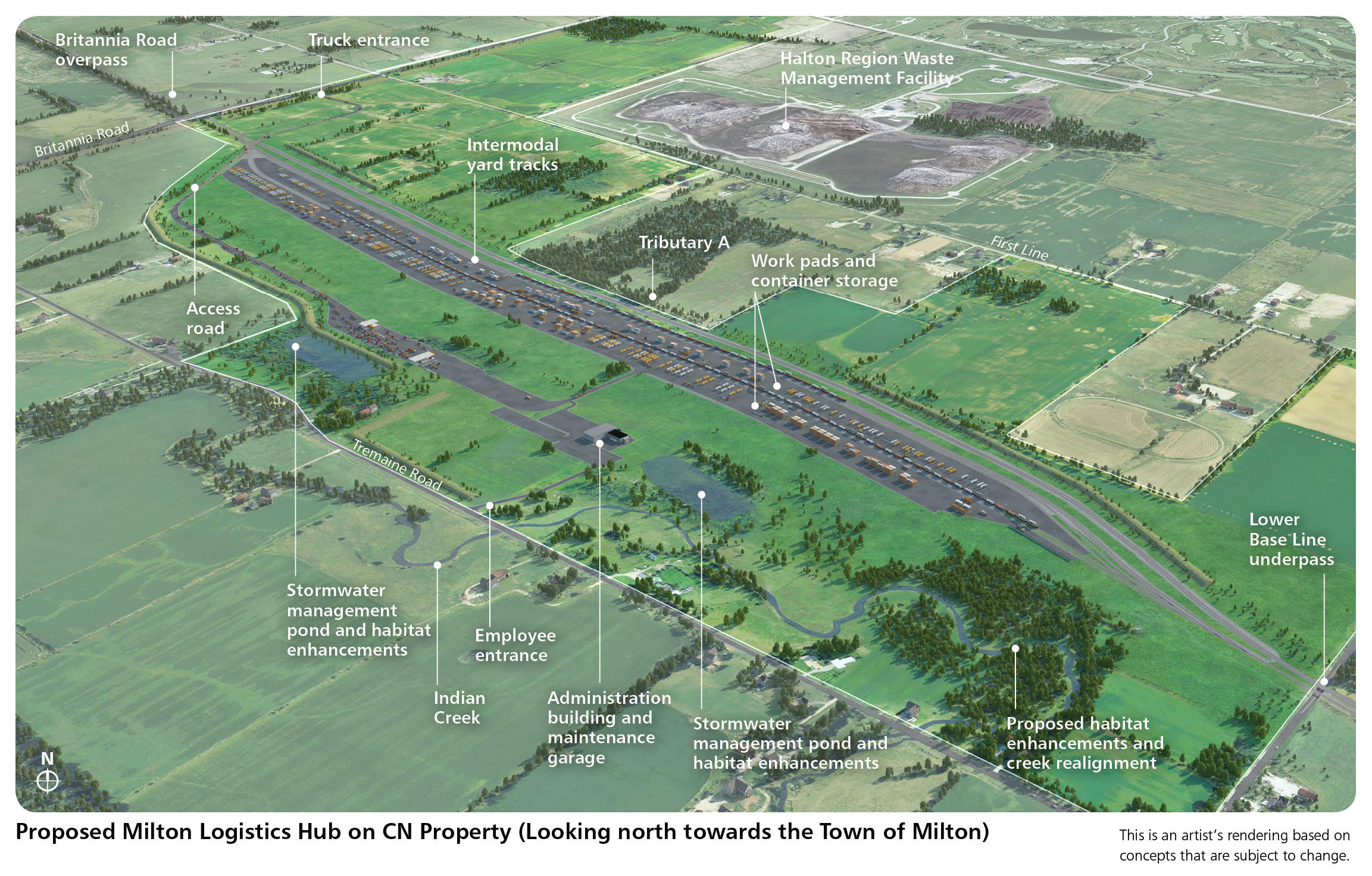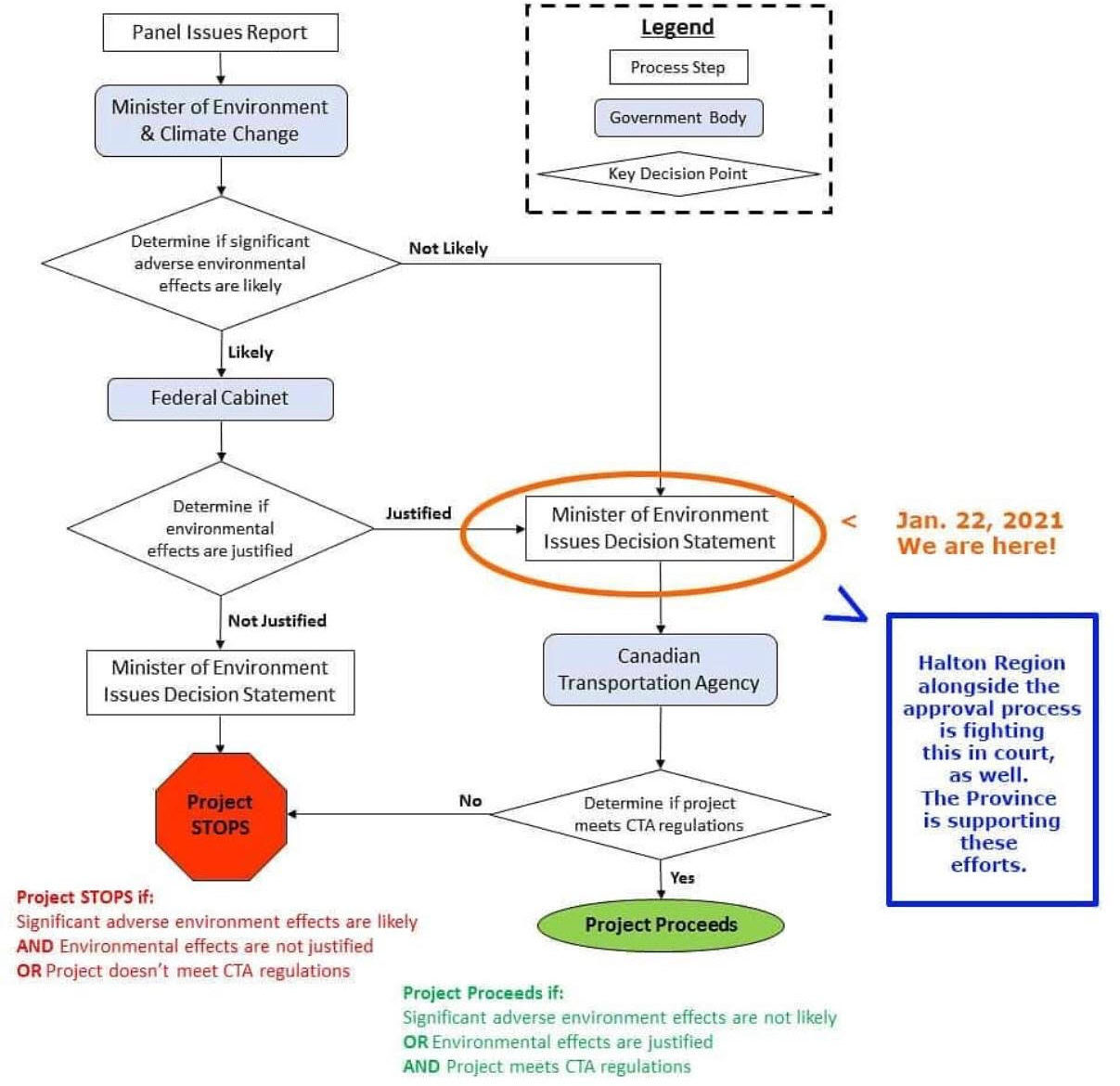
After last week’s announcement that the CN Intermodal/Logistics Hub has been conditionally approved by the federal government, we’ve seen many Milton residents very upset.
The $250 million facility, located east of Tremaine Road and south of Britannia, will allow the transfer of shipping containers to trucks, and it has been strongly opposed by the community and all local levels of government since the initial proposal was announced.

While most industries require a community’s approval to build, CN’s fate rests mostly with the federal government, thanks to the Constitution Act of 1867.
Environment Minister Jonathan Wilkinson has acknowledged that the project will create “significant adverse environmental impacts,” but added the government “decided that the significant adverse environmental effects that the Designated Project is likely to cause are justified in the circumstances.”
CN has said that the logistics hub will improve the Canadian supply chain to meet the growing demand of goods entering the Greater Toronto and Hamilton areas, and that it can play a key part in Canada’s economic recovery and efforts to actually reduce greenhouse gas emissions by transitioning from trucks to train shipment.
There are 325 conditions attached to the approval, including limits to the number of containers per day, installation of noise dampening berms, and measures to reduce dust and light pollution. There are 40 conditions specifically addressing air quality.
Milton Mayor Gord Krantz says there are approximately 34,000 current and future residents within one kilometre of the facility – including one hospital, twelve schools and two long-term care homes.
According to Liberal MP Adam van Koeverden, the fight is not over. “There is a Canadian Transport Agency process, there is a Provincial court case involving the Region of Halton, and many other hurdles for CN to attempt to clear before this is over.”
Here’s a flowchart that helps explain the steps.

“Don’t expect shovels in the ground anytime soon” said van Koeverden.
How will this impact real estate?
On social media, we’ve read posts from the community saying that Milton has “gone to hell” and all of the things you would expect when big news first hits.
Let’s imagine for a second that the project moves forward. For now, we won’t debate the pros and cons, or the very real health and environmental impacts of having the station built. It’s not an ideal location, being this close to residents. Even the federal government has admitted that.
If it goes ahead and the Hub is a real thing, the question we are being asked by MANY of our clients is:
“What will happen with real estate values?”
We believe that the immediate area around the Hub will feel very minor impact to value long-term. Of course, there will be a stigma attached to anything within a short radius of the Intermodal Hub soon after it’s complete, which will slowly begin to adjust to a more normalized sense of value.
Most of the Town will not experience a change in their daily life or a change to the value of their home.
If you live in any neighbourhood north of Louis St. Laurent OR east of Ontario Street, don’t expect house prices to change in your area at all.
We’ve toured many homes around the Brampton Intermodal Terminal (approximately 35 kilometres away), and they’re almost exactly the same price as everywhere else in Brampton. No significant value adjustments have been made in that area, unless the property is within direct line-of-sight of the station… so what makes us believe that Milton will be any different?
From a local perspective, we can look to homes close to mushroom growing facilities, sewage treatment plants, industrial zones and chicken “processing plants” for more proof that real estate values are not substantially different when they exist close to these places.
Traffic can also affect real estate values. From a traffic standpoint, they’re capping the number of trucks allowed in and out of the Intermodal Hub, which is a small slice of the amount of total traffic passing by this zone.
It’s possible that the truck traffic and overall emissions MIGHT even be similar to the amount of car traffic if the area was developed with denser housing and commercial projects instead of the Intermodal Hub.
For that reason, commute times are expected to not change significantly.
It definitely sucks that the community can’t use the CN land for more density and growth, but if we fast-forward to the worst-case scenario and it’s actually built… we really don’t think it will have a significant effect on most Milton residents’ real estate investments.
It’s still imperative that we should fight CN for many health and environmental reasons, but our primary focus for this blog post is on REAL ESTATE.
And we’re just not convinced that it’s the “end of the world” for Milton’s house prices like some people are saying on social media.
We strongly believe, based on many years of studying real estate trends locally and in other surrounding communities, that your home’s value will be just fine.
References:
Press Release – Government of Canada Approves Milton Logistics Hub Project
Milton Says No Community Group
Local Councillor John Challinor: The Wrong Yard in the Wrong Place at the Wrong Time